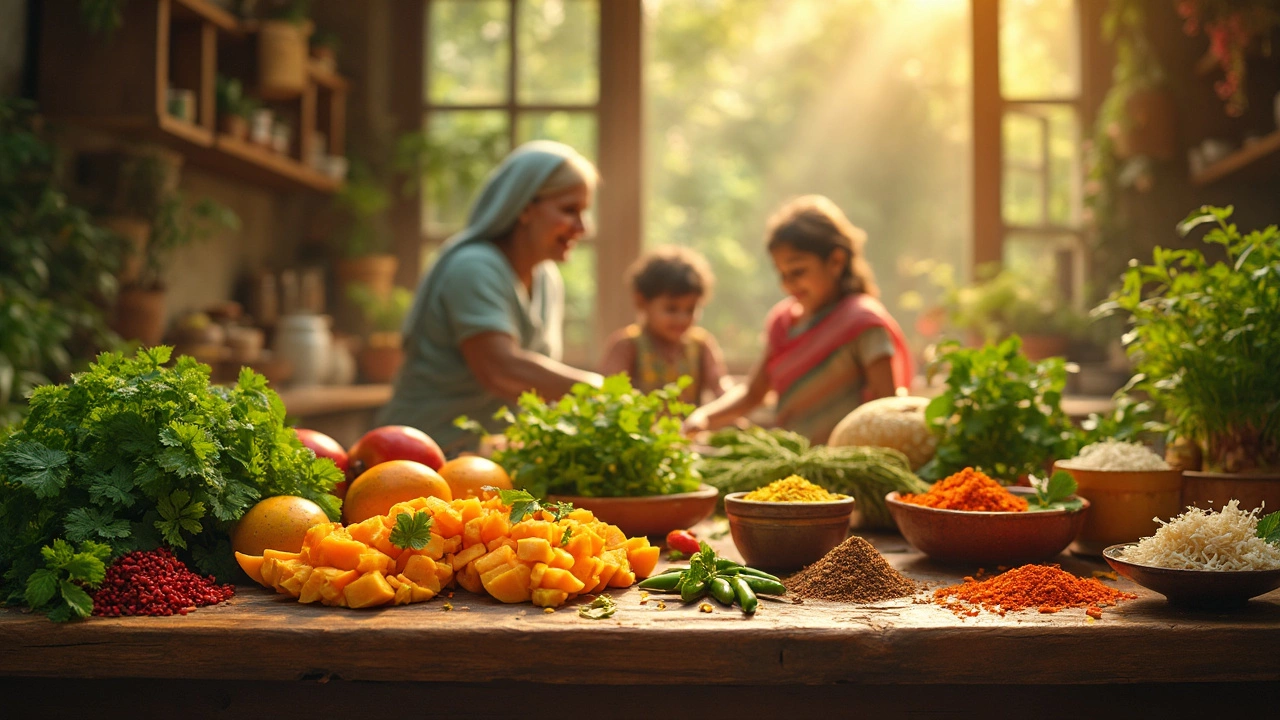Chutney Ingredients: The Building Blocks of Indian Condiments
When working with chutney ingredients, the fresh herbs, spices, fruits, nuts, and acidic elements that create Indian condiments. Also known as condiment bases, they form the heart of every Indian table. Key groups include Herbssuch as cilantro, mint, and curry leaves, Spiceslike mustard seeds, cumin, and asafoetida, and Sour agentsincluding tamarind, lemon juice, and raw mango. These entities interact to give chutney its signature punch.
The magic of chutney ingredients lies in balance. A good chutney requires the right mix of sweet, sour, salty, and heat, so each bite feels lively without overwhelming the palate. For example, fresh herbs provide bright aroma, while ground spices add depth and warmth. Adding a sour agent lifts the flavors, preventing them from feeling heavy. This balancing act encompasses flavor layering, texture contrast, and aroma harmony, turning simple pantry items into a versatile side.
Fruits and nuts often step in to thicken and sweeten. Typical fruits include mango, pineapple, and tamarind pulp, each bringing a unique tartness that pairs with heat. Nuts like peanuts, cashews, or roasted chana dal add body and a subtle nutty richness. When you grind these components together, the resulting paste can be smooth or grainy, depending on the tool you use—mortar‑pestle, blender, or food processor. The choice of fruit or nut changes the final texture, making the chutney suitable for anything from a dipping sauce to a spread.
Regional traditions influence which Herbsare dominant and which Spicestake center stage. In South India, coconut combined with green chilies, roasted lentils, and curry leaves creates a creamy, mildly spiced chutney that pairs perfectly with dosa or idli. Up north, mint‑coriander chutney leans on fresh cilantro, mint, green chilies, and a splash of lemon juice for a zesty kick. In the west, garlic‑ginger chutney uses a hefty dose of garlic, ginger, and tamarind for a bold, pungent profile. Each regional style demonstrates how the same core ingredients can produce wildly different outcomes.
Storage matters as much as preparation. Freshly made chutney can last 3‑5 days in the refrigerator if kept in an airtight container. Adding a bit of oil on the surface creates a barrier that slows oxidation. For longer keeping, you can freeze chutney in ice‑cube trays and transfer the solid cubes to a zip‑lock bag, extending life to a month or more. When canning, follow safety guidelines: bring the chutney to a rolling boil, pack hot jars, and process for the recommended time. Properly canned chutney can survive pantry storage for up to a year, giving you seasonal flavors all year round.
Finally, don’t be afraid to improvise. If you’re out of tamarind, substitute with a mix of lime juice and a pinch of brown sugar. Missing peanuts? Try roasted almonds or even sunflower seeds for a similar crunch. Adjust heat by swapping green chilies for milder serranos or boosting spice with dried red chili powder. These flexible swaps keep your chutney experiments alive, ensuring you always have a tasty accompaniment ready.
Below you’ll find a curated collection of articles that dive deeper into individual chutney components, storage tricks, regional recipes, and creative variations. Whether you’re a beginner looking for a simple mint‑coriander blend or an experienced cook seeking to master coconut‑based sauces, the posts ahead will give you practical, step‑by‑step guidance.

Traditional Chutney: What Is It Really Made Of?
Ever wondered what's actually in traditional chutney? This article breaks down the real ingredients behind classic chutneys, sharing interesting tips and facts that might surprise you. Learn about the combinations that make every batch unique across homes in India. We'll talk fresh herbs, spices, tangy fruits, and even the odd family secret. Get set to level up your chutney game with practical knowledge and pro tips.